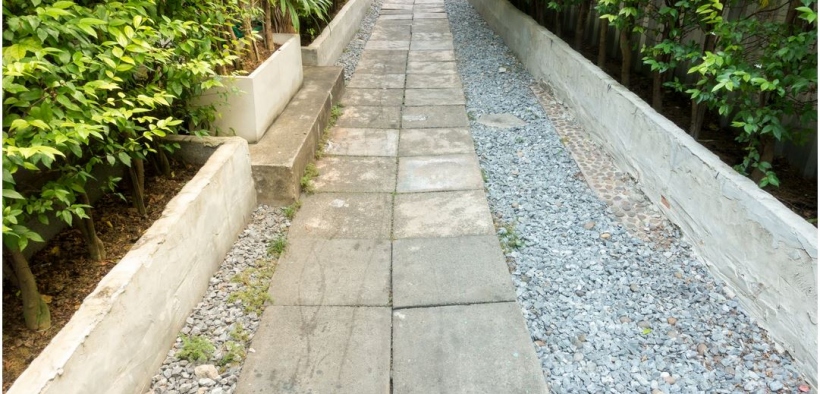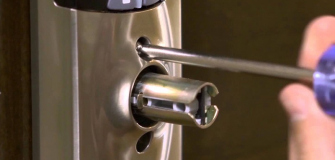4 Ways to Ensure Your Landscaping Lasts
Share

Landscaping makes your yard look amazing and inviting. Therefore, it is important to ensure that your lawn is well maintained through proper landscaping skills. Also, it is important to ensure that your landscaping lasts longer, and this can only be achieved when there is ample maintenance and proper landscaping tools used. Also, if you don’t have the necessary landscaping skills, you can contact a professional landscaping company to help keep your lawn and yard tidy and beautiful. In this article, you will find some of the ways to help you ensure that your landscaping lasts.
Hire the Experts
Experts in landscaping will do an evaluation of your landscaping needs and provide you with reliable and convenient services. For example, a professional can evaluate the water retention of the soil in your garden and help you make informed decisions such as waterproofing your lawn. This will help with the proper drainage. With proper drainage, there will be no still water in your landscape that may damage the appearance of your landscape, therefore making your landscaping last for longer periods.
Pest and Weed Control
Pests and weeds may damage the overall appearance of your landscape by damaging the flowers, plants and bushes in your yard. Therefore, it is important to ensure that you incorporate safe control measures in your landscape to help eliminate pests and weeds. It is important to consult with an expert on measures that are environmentally friendly to help you protect yourself, your plants and trees from harmful chemicals. By applying effective pest and weed control measures, your landscaping will remain beautiful and appealing for a longer period.
Consider the Season and Location
Take into consideration the type of season to help you have the right plants in your yard. This way, the plants will thrive and require little to no maintenance at all season long. When you add plants that will not thrive in a certain season, this may bring a dull look to your landscape since the plants will wither and die. Also, some plants do not thrive in certain locations. Get flowers and plants that will thrive in your current location to bring some harmony into your landscape and ensure that it maintains a serene environment for longer periods of time.
Proper Maintenance
Have a well-laid-out maintenance routine for your garden and yard. This will help in maintaining a good landscape with eye-catching views. Ensure that the trees are trimmed on time, and the mulching is done properly for your plants and flowers to thrive.
All these points will help your landscape last longer and remain in good condition. It is important to do your due diligence to know the best company to hire as well as the right plants to add to your garden so that the foliage can beautify your landscape.
The condition of your yard’s landscaping plays an important part in the appearance and value of your entire home and property. When you neglect your landscaping, you affect not only the property’s appearance but also the landscaping’s value when you have to replace and put additional investment into new supplies and plants. For this reason, it is best to complete maintenance in a timely manner. Here are some tips to help you complete spring repairs to your home landscaping after winter weather damage.
Patch Asphalt Surfaces
The pavement on your property is a big investment, and one that you don’t want to have to replace before its time due to neglect. Asphalt is susceptible to drying out and cracking if you don’t patch cracks and protect the surface with sealcoating on a regular basis.
Spring is a great time to complete bi-annual inspections of your asphalt, then apply patching compound to potholes that have formed over the winter. Be sure you prepare the areas by removing loose chunks and dirt before applying your patching materials. Also, hire a professional asphalt patching service to apply a larger area of patching, as they can repair all spots in the same project.
You will find that fresh hot mix asphalt will last longer and be more durable than a cold mix patch; however, it can be a better investment when you have a larger area of repairs needing work. You can complete small do-it-yourself projects on your own to fill small asphalt cracks between the professional repairs.
Maintain Mulched Areas
Another area of your yard that can become damaged during the winter is the landscaping mulch of your bedding areas. Winter snow and ice and shoveling can disturb and scatter mulch material from their areas.
Once the soil thaws in the spring, you can repair any damaged landscaping fabric below the mulch materials. Remove the mulch materials and reattach the landscape fabric with landscape stakes. Be sure the fabric ends overlap one another by at least a foot to prevent weed growth from coming up through your landscaping. Secure the edges of the fabric under your mulch border, whether they are decorative stones or bricks to help keep the mulch in place during the growing season.
Next, you can smooth mulch back over the secured landscape fabric, covering it with several inches of mulch. You will likely need to supplement the mulch with any that was lost during the winter, which you can buy in bags or by the truckload from a local landscape or home improvement business.
With spring right around the corner, your thoughts are likely turning toward lawn care. While mowing, fertilizing, and weed management are all important tasks, there are three additional tasks that can really make a difference in how your lawn looks this year. The following will introduce you to these maintenance strategies.
Dethatching
The thatch layer sits on top of the soil, around the base of the grass blades. This layer is made up of decomposing plant matter, including lawn clippings and detritus from fallen leaves. A thin thatch layer is actually beneficial to the lawn, as it provides a mulch that suppresses weeds and conserves soil moisture. When the thatch becomes too deep, though, it can smother grass by preventing moisture and nutrients from reaching the soil.
If the thatch layer is more than about 1/4 inch thick, it’s time to remove it. For small yards, you can pull up the thatch with a dethatching rake. A mechanical dethatcher works better for larger yards. How often you dethatch depends on several factors, such as whether you leave the clippings on your grass after mowing and whether you have trees in your yard.
Aerating
Over time, soil can become so badly compacted that grass has trouble growing through it and water won’t soak into it. Compaction occurs more frequently in very dry soils or those that contain a lot of clay, but it can affect any soil type. Areas with heavy traffic or those along normal lawn mowing paths are more likely to become compacted.
Annual aeration of the yard will open up the soil so that moisture can flow into the ground again. A core aerator removes small plugs of soil, which are then left on top of the ground to “melt” away the next time you irrigate. You can rent an aeration machine from some hardware stores, or you can hire a lawn service for the task.
Edging
An edged lawn looks nicer and it helps prevent weed encroachment along the verge of the lawn. Edging should be done not just along sidewalks, but between grass areas and landscape beds as well. Edging between lawn and beds helps stop grass from growing into your flower beds.
Although many weed trimmers come with edging capability, they are clumsy and best suited for small areas. For extensive edging, use a lawn edger so you can more effortlessly cut a straight, clean edge. Contact a lawn service in your area to schedule your spring lawn care appointment today.









